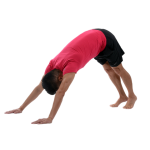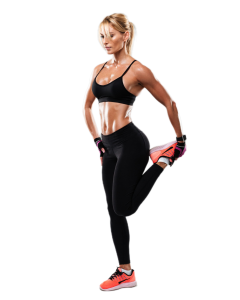
Stretching is a simple and effective activity that helps to enhance athletic performance, decrease the likelihood of soft tissue injury and minimize muscle soreness. Other benefits include: improved range of movement; increased power; improved posture; and improved co-ordination.
Stretching Should be done before exercising as a preparatory activity to stimulate neurological awareness, also after exercising as a method of cooling down and reminding joints and muscles of their moving patterns. You could also do it as a method of recovery session day after activity.
CAUTION:
Don’t stretch a fresh injury. Apply ice on it straight away. Especially if near a joint like knee or ankle. Apply the ice for 20min every 2hrs for the first 48-72 hours. Get Medical advice.
You should discuss the suitability of stretches with your health practitioner before starting. Generally, such exercises should only be performed provided they do not cause or increase pain.
BENIFITS of STRETCHING:
- Improves mobility and flexibility.
- Prevents injury & helps you recover fast.
- Removes lactic acid to aid recovery.
- Improves range of motion.
- Improves quality of movement.

GENERAL GUIDELINES:
- Avoid recently injured areas.
- Avoid using over Chronic pain conditions and check with your Doctor or Physio first.
- Stretch before and after exercise.
- Stretch all major muscles and their opposing muscle groups.
- Stretch gently and slowly.
- Stretch only to the point of tension & know your limits.
- Avoid applying pressure on bones and joints. Just muscle.
- Avoid Bouncing when stretching.
- Be aware to use correct posture when stretching.
STRETCHING & WARM UP
Stretching is not warming up! It is, however, a very important part of warming up. Warming up is quite literally the process of “warming up“. By raising your heart rate at a gradual pace, the warm-up helps minimize stress on your heart. Once your muscles are warm, they’re ready for stretching.
Basically, it’s general warm-up first, then stretching and then starting the sport-specific activity.
STRETCHING & COOLING DOWN
A cool-down after physical activity allows a gradual decrease at the end of the session. It’s good to stretch when you’re cooling down because your limbs, muscles and joints are still warm. Stretching can help reduce the build up of lactic acid, which can lead to muscles cramping and stiffness.
OPPOSING MUSCLES
Every Muscle in the body has an opposing muscle. For example the muscle in the front of legs (the Quadriceps) are apposed by the muscles in the back of legs (the Hamstrings). If one of these muscles are more stronger or more flexible than opposing muscle, it could lead to imbalances that could result in injury or postural problems.
Hamstring tear is a common injury. It often arises from strong Quads and weak inflexible hamstrings. This imbalance puts a great deal of pressure on hamstrings, resulting in a muscle tear. The same applies to other opposing muscle groups.
Some of the major muscle groups that work to balance your body and provide good posture are:
- Chest & Upper Back
- Biceps & Triceps
- Abs & Lower Back
- Quads & Hamstring (upper legs)
- Calves & Shins (lower Legs)
Incorporating regular stretching into your daily routine is a small investment with significant returns. Enhanced flexibility, improved range of motion, and reduced risk of injury are just a few of the advantages. Whether you’re an athlete, a fitness enthusiast, or simply aiming for better overall health, dedicating time to stretch can positively impact your physical well-being. Remember to stretch safely and focus on major muscle groups for optimal results.
If you would like to read information about core stability check out our blog Core Stability – Absolute Healing Sports Massage Sydney
